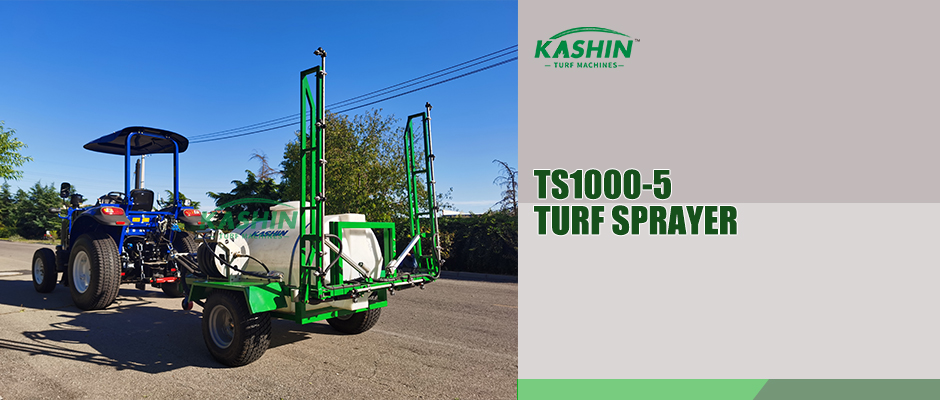Lawn mowing principles should be based on the 1/3 principle. Relatively tall lawns cannot be cut to the required height at one time. Every time you mow, 1/3 of the leaves should be cut off so that the remaining lawn leaves can photosynthesize normally. Function, supplement assimilation products for the lawn root system. If you mow too much at one time, the above-ground leaves will not be able to provide enough assimilation products for the root system, hindering the growth of the root system, and the lawn will die due to lack of nutrients.
If the lawn is growing too vigorously, the mowing height should be raised as much as possible. After three or four days, the lawn should be mowed to the normal lawn mowing height to avoid excessive cutting of the mature leaves of the lawn, which may cause light burns on the lawn and the breeding of weeds. . When the lawn grows to a high enough length, the lower leaves have adapted to the shaded environment due to being shaded from the sun for a long time. When the upper leaves of the lawn are cut off, the lower leaves of the lawn are exposed to the sun and may cause damage due to excessive light. Leaf burn.
Determination of mowing frequency The frequency of mowing lawn grass depends on how fast the lawn grass grows. Warm-season lawns require the least number of mowings for thriftgrass, followed by zoysia zoysia, zoysia tenuifolia, and Japanese zoysia. Bermuda grass and carpet grass require more mowing. Among cool-season turfgrasses, fine-leaved fescue and purple fescue require less frequent mowing, while other turfgrass species require more frequent mowing.
The application of fertilizers, especially nitrogen fertilizers, has a greater impact on the growth rate of lawns. Generally, the higher the amount of nitrogen fertilizer, the faster the lawn will grow and the more frequently it will need to be mowed. In addition, excessive use of nitrogen fertilizer can also cause the lawn grass to weaken its resistance to pests and diseases. Therefore, nitrogen fertilizers should be used rationally, not only to ensure the lawn’s demand for nitrogen fertilizers but also to prevent excessive application of nitrogen fertilizers. At the same time, combined with soil test results, phosphorus, potassium and iron should be used in combination to reduce the frequency of lawn mowing while ensuring that the lawn grass can be healthy. grow.
The frequency of lawn mowing is also related to the growing season of the lawn. Cool-season lawns generally grow faster in the spring and autumn and are mowed more often, and grow slower and mow less frequently in the summer. Warm-season lawns grow faster in the summer, grow more slowly in the spring and autumn, and mow less frequently. Regardless of whether it is a cool-season lawn or a warm-season lawn, in colder climates, the root system grows more slowly, its activity is reduced, and it cannot provide necessary nutrients to the above-ground leaves. Therefore, the appropriate mowing height should be used when mowing the lawn. The lower limit is to reduce the consumption of nutrients by above-ground leaves.

Within a certain range, the amount of lawn irrigation is also related to the growth of lawn grass. The greater the amount of irrigation, the more times the lawn needs to be pruned. In contrast, under drought conditions, plants grow slowly, grow less, and are pruned less frequently. Do not mow when the lawn has just been watered or when the soil is relatively humid, because the mowed lawn will appear uneven at this time, and the clippings will easily gather into clumps and cover the lawn, which will cause the lawn to become dry. Suffocation due to insufficient lighting and ventilation.
Grass clippings treatment: The lawn clippings left on the lawn after trimming. Although the nutrients in the grass clippings can be returned to the lawn, improving drought conditions and preventing the growth of moss, the grass clippings should usually be cleaned up in time, otherwise the grass clippings will remain on the lawn. Upper accumulation not only makes the lawn look unsightly, but also causes the lower lawn to suffocate due to lack of light and aeration. In addition, after the grass clippings decay, they will also produce some toxic small-molecule organic acids, which inhibit the growth activity of the lawn root system and weaken the growth of the lawn. The remaining lawn clippings are also conducive to the breeding of weeds and can easily cause the spread of lawn diseases and insect pests.
Under normal circumstances, lawn clippings should be cleaned up in time after each mowing. However, under high temperature conditions, if the lawn itself grows healthily and no disease occurs, the clippings can also be left on the surface of the lawn to reduce the risk of lawn damage. Soil water evaporates.
Post time: Oct-09-2024
